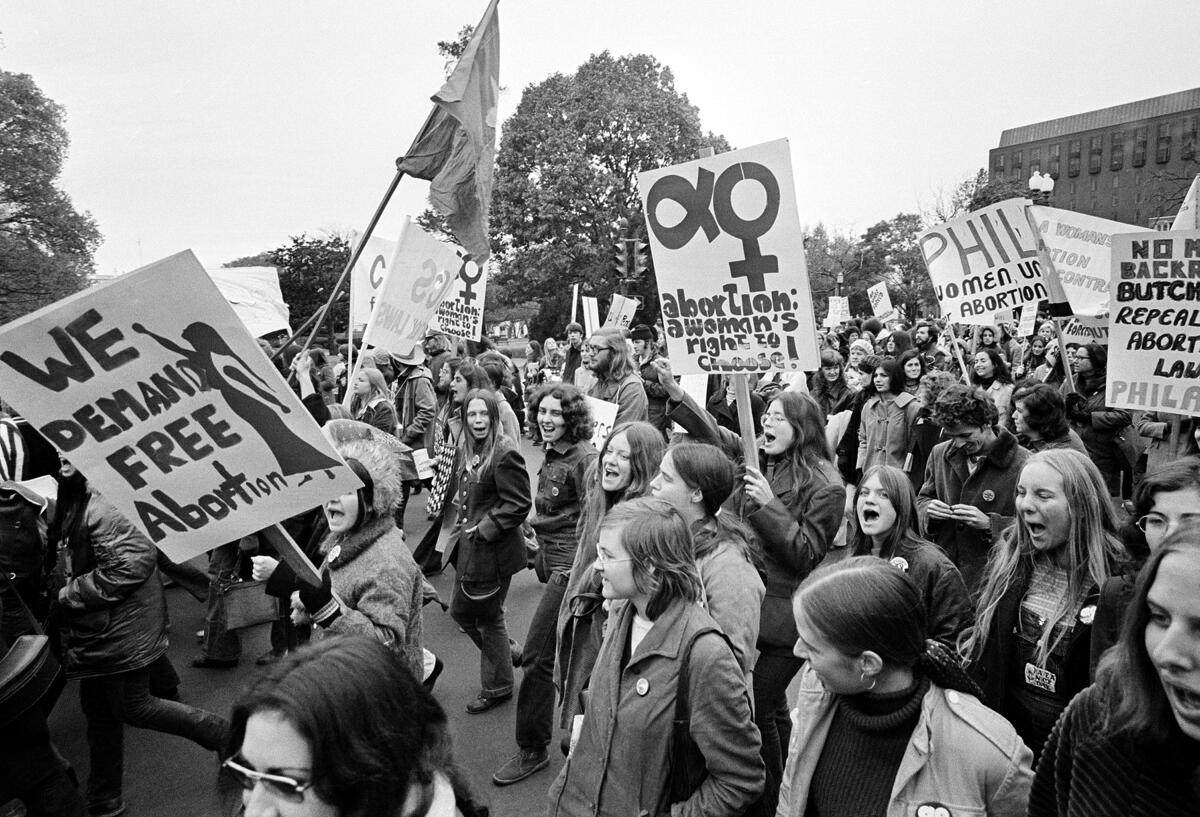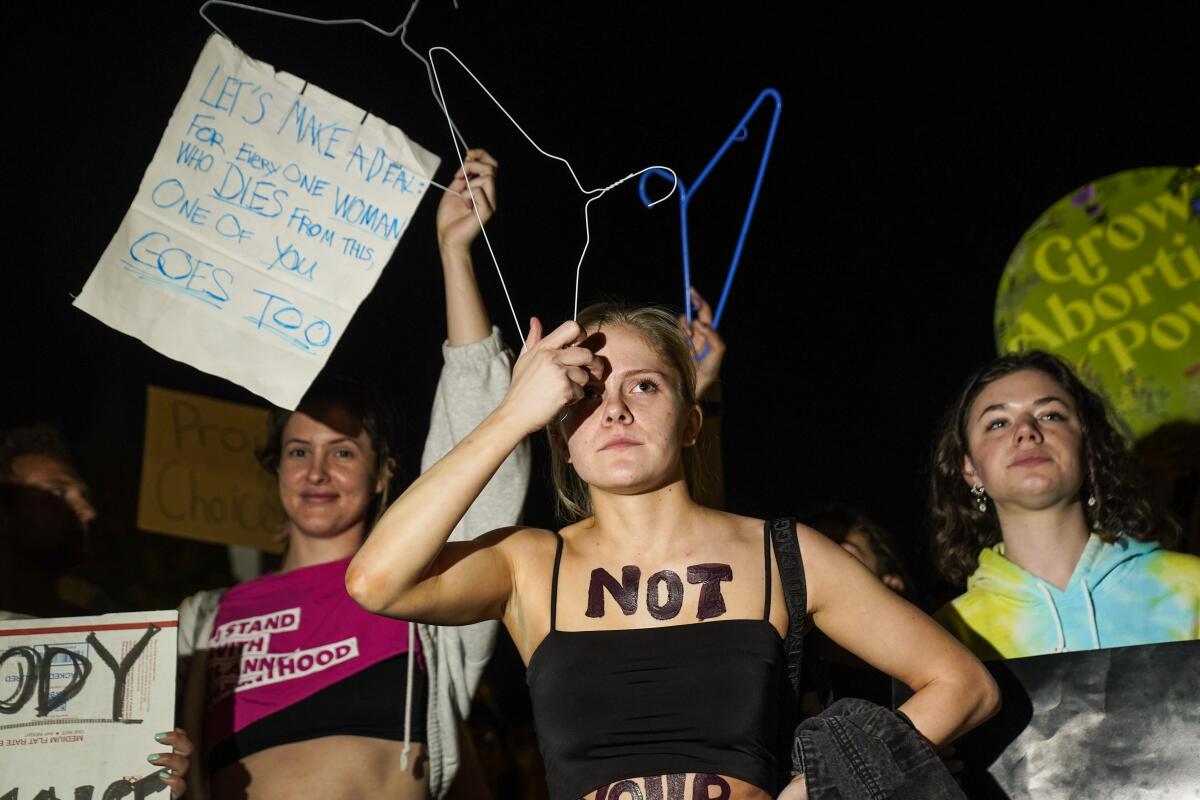
Roe vs. Wade, the Supreme Court’s best-known decision of the last 50 years, is also its most endangered precedent.
It gave women nationwide the legal right to choose abortion, but the backlash reshaped the country’s politics. The landmark ruling may well be overturned by conservative justices appointed by Republican presidents to do just that.
What went wrong with Roe? Why did the court’s effort to resolve the abortion controversy in 1973 lead instead to decades of division?
Legal scholars and political scientists point to major missteps at the start that left the decision vulnerable.
The Future of Abortion
One in an occasional series of stories about the state of abortion as Roe vs. Wade faces its most serious challenge.
In Roe, the justices announced a broad new constitutional right to abortion that is not explicitly found in the words or the history of the Constitution.
Justice Harry A. Blackmun, who authored the long Roe opinion, included the medical history of abortion, citing the views of Persians, Greeks and Romans, and quoting two versions of the Hippocratic oath and early English authors dating to the 13th century.
He did not, however, quote a provision in the Constitution that protected abortion rights.
That omission is cited in the draft opinion currently being circulated by conservative justices as they prepare to overturn Roe.
“The Constitution makes no reference to abortion and no such right is implicitly protected by any constitutional provision,” Justice Samuel A. Alito Jr. wrote in a draft published Monday by Politico. He added that Roe’s “reasoning was exceptionally weak.”
Blackmun based his ruling on the idea that the Constitution protects a broad right to privacy, which is implied by the 14th Amendment.
The amendment says “no state shall … deprive any person of life, liberty or property without due process of law.” The court had cited this privacy right before, most notably in 1965 to strike down a Connecticut law that made it a crime for married couples to use contraceptives.
While the Constitution “does not explicitly mention any right of privacy,” he wrote, its protection for personal liberty and privacy “is broad enough to encompass a woman’s decision whether or not to terminate her pregnancy.”
Conservatives regularly cite Roe as an example of liberals finding new constitutional rights in provisions or language never intended for such purposes.
When the 14th Amendment was adopted in 1868, abortion was illegal in three-fourths of the states. In 1973, when the court decided abortion was a “fundamental” personal right, 46 states prohibited most or nearly all abortions.

Even some prominent scholars who supported legal abortion derided the court’s opinion.
It’s “a very bad decision,” wrote Yale Law professor John Hart Ely, a former clerk to Chief Justice Earl Warren, “because it is not constitutional law and gives almost no sense of an obligation to try to be.”
Those critics included a young Ruth Bader Ginsburg. In the years before she became a justice, she said the court made a mistake by going too far, too fast in its first ruling on the constitutionality of abortion.
Ginsburg had been the leader of the ACLU’s Women’s Rights Project in the 1970s, and later an appeals court judge in the 1980s. She gave several speeches criticizing the court’s handling of the abortion issue.
Roe vs. Wade “became and remains a storm center,” she said at the time, “because the court ventured too far in the change it ordered.”
Rather than resolve the issue, the court’s broad ruling “halted a political process that was moving” to liberalize abortion already, she said, and instead launched “the mobilization of the right-to-life movement” that changed American politics.
She said the court would have been wiser to issue a brief ruling that struck down the “extreme statute before it,” referring to the Texas law dating to 1854 that made all abortions a crime, except for “saving the life of the mother.”
There were no exceptions to protect the health of the pregnant woman or in cases of rape, incest or a severe fetal abnormality. Ginsburg suggested that if the states were given a hard nudge by the court, they would have revised and liberalized their abortion laws.
She also argued for a different legal rationale, one based on equal rights for women rather than privacy. Laws banning abortion had been written by men and were enforced by men, but their burden fell entirely on women.
Roe’s timetable was another problem.
In November 1972, Blackmun sent his colleagues a near-final draft of his opinion that concluded abortions should be legal through the first three months of pregnancy. “This is arbitrary, but perhaps any other selected point, such as quickening or viability, is equally arbitrary,” he said.
Two other justices sent back memos suggesting the legal cutoff should be at the “point of viability,” which comes between the 24th and 28th week of a pregnancy. With no further discussion, Blackmun changed the final opinion to say abortions may not be restricted prior to viability.
That seemingly casual change led to decades of litigation.
“The first-trimester/second-trimester dividing line is a big deal,” said Harvard Law School professor Michael Klarman. “It’s why ‘partial-birth’ abortion laws were such a political gold mine for Republicans. Roe created such a broad abortion right that it probably pushed some of the many Americans in the middle of the spectrum on this issue into the opposition.”
The abortion case pending before the court today — Dobbs vs. Jackson Women’s Health Organization — began when Mississippi’s 15-week limit on abortion was struck down.
Roe’s legacy includes helping to launch a new judicial philosophy on the right.
Five of the current nine justices now echo the words of the late Justice Antonin Scalia and say the court should interpret the Constitution based on the words and original meaning of its provisions.
In setting out the argument for overturning Roe, Alito’s draft says Blackmun’s opinion was “remarkably loose in its treatment of the constitutional text. It held that the abortion right, which is not mentioned in the Constitution, is part of a right to privacy, which is also not mentioned.” The continuing division over the ruling, he said, shows why the court should be “reluctant to recognize rights that are not mentioned in the Constitution.”
Some experts say the political battle over abortion — which became a starkly partisan issue only beginning in the 1980s — was unavoidable, regardless of the legal reasoning in Roe.
Mary Ziegler, a Florida State law professor and author of several books on the abortion wars, said she is “skeptical that it would have made a difference” if the court had written a different and better opinion.
“This is not about the reasoning in Roe,” she said. “It is a fight over two fundamental human rights, and for many, there can be no compromise. Overruling Roe won’t satisfy the anti-abortion movement.” They want the court to recognize a “right to life” for the unborn child, she said.
Yet the sweep of Roe certainly fueled the political fight, and created the right-to-life movement that eventually found a home in the GOP.
“There was no Republican-Democrat divide on abortion during the 1970s,” said Neal Devins, a College of William & Mary law professor. “In a poll taken shortly before Roe was decided, 68% of Republicans and 58% of Democrats said the decision to have an abortion should be made by a woman and her physician.”
And the anti-abortion movement spawned by the ruling set upon one goal: overturning Roe.
“Roe was the catalyst for the Christian right to get engaged in politics,” said Amanda Hollis-Brusky, a politics professor at Pomona College in Claremont.
Ever since, “they have made an issue out of [abortion] and organized around it,” said Khiara M. Bridges, a law professor at UC Berkeley. “Very few people have read Roe. But abortion has become a very partisan issue.”